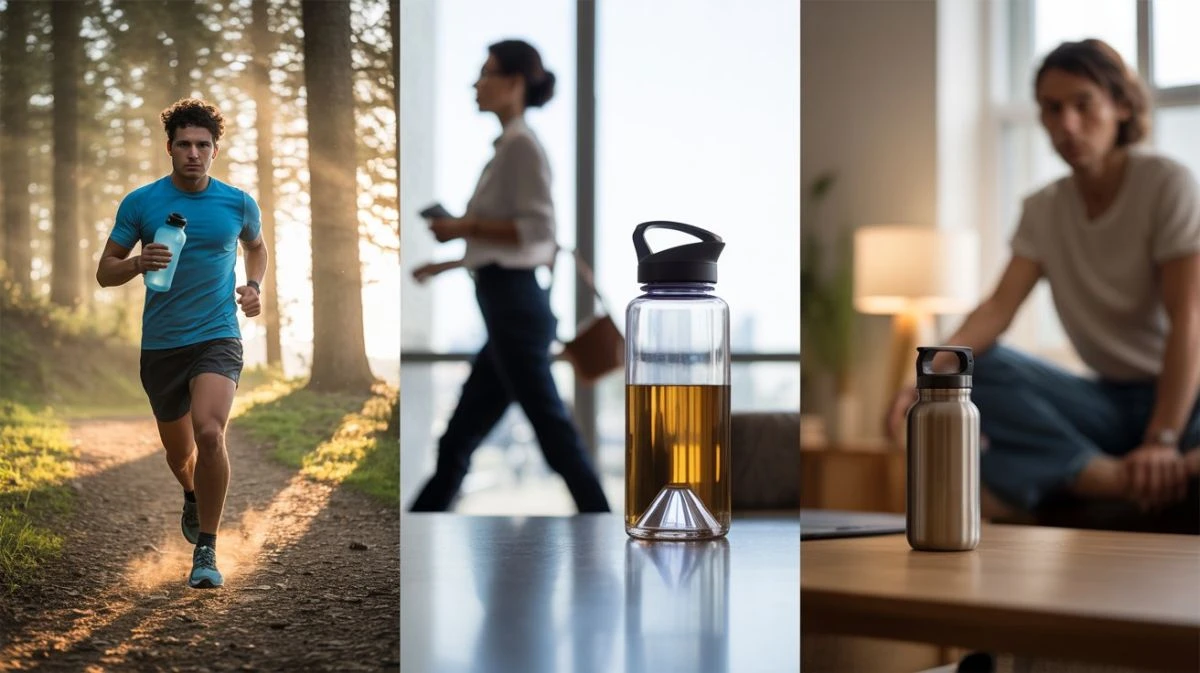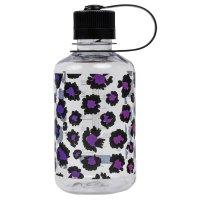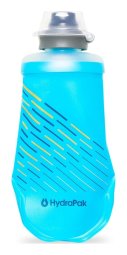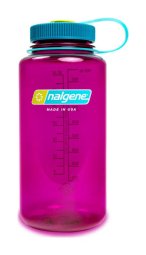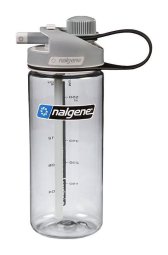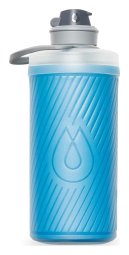Did you know that a well-chosen bottle can influence your hydration habits, athletic performance, and the taste of your drink? In an era where we strive to reduce single-use plastics and seek healthier, more sustainable solutions, the right choice of bottle is more important than ever. Whether you're a recreational athlete, an office worker, an adventurer on the go, or simply looking for a reliable container to maintain your hydration, our guide will help you navigate the world of materials, volumes, and practical features. We'll show you the benefits of TPU, Tritan, and stainless steel bottles and advise you on what to base your decision on.
Contents:
- Why Invest in a Quality Water Bottle
- Overview of the Most Common Materials
- TPU Sports Bottles Not Just for Running
- Tritan Bottle for Everyday Use
- Stainless Steel Bottles and Durable Stainless Steel Thermoses for Lovers of Temperature Stability
- Other Materials
- Bottle Size, Volume, Shape, and Ergonomics
- Lids, Mouthpieces, and Other Details
- Maintenance, Hygiene, and Lifespan
- Hydration Reservoirs
- Ecological Footprint and Recycling
- Upcycling Tips and a Second Life for Bottles
- Recipes for Bottles (Quick and Healthy)
- Frequently Asked Questions When Choosing a Water Bottle
- Final Recommendation: Choose Smart, Drink Regularly
Why Invest in a Quality Water Bottle
- Health – safe, BPA-free materials do not release harmful substances and do not alter the taste of the drink.
- Ecology – a reusable bottle saves hundreds of single-use PET bottles per year.
- Economy – one quality bottle means lower costs compared to bottled water.
- Lifestyle – design, colors, ergonomics, and accessories motivate you to drink more.
When you add durability, temperature stability, and possible filtration systems, the bottle becomes a small but significant accessory in daily life. The right choice will be reflected in comfort and personal style.
Overview of the Most Common Materials
Modern drinking bottles are made from several key materials, each with specific advantages and limitations. Before we begin the comparison, let's look at how their properties will affect your daily hydration.
| Material | Key Properties | Advantages | Disadvantages | Weight 500 ml* | Typical Use |
|---|---|---|---|---|---|
| TPU (Thermoplastic Polyurethane) | Flexible, soft, abrasion-resistant | Lightweight, highly compressible, BPA-free | Not suitable for hot drinks | ~38 g | Sports running bottles, soft-flasks |
| Tritan | Hard, BPA-free copolyester | Impact-resistant, clear, does not alter taste | Slightly higher price | ~95 g | School and office bottles |
| Stainless Steel 18/8** | Double-wall vacuum insulation | Maintains temperature for 6–24 h, extreme durability | Heavier, more expensive | ~270 g | Outdoor thermoses, hot and cold drinks |
| Glass | Chemically inert | Taste-neutral, easy to recycle | Fragile, heavy | ~400 g | Home or office carafes |
| Aluminum | Lightweight metal body | Low price, low weight | Requires an internal food-grade lining, prone to denting | ~135 g | Recreational outdoor, promotional bottles |
| PET (Polyethylene Terephthalate) | Hard, clear single-use plastic | Very cheap, lightweight, highly recyclable (code 1) | Intended for single use, releases antimony when heated, alters taste | ~22 g | Bottled water, sodas, single-use bottles |
*Approximate average – actual weight may vary depending on construction, lid, and finish.
** On most quality stainless steel bottles, you will find the designation 18/8 (or 18/10). These numbers mean that the steel contains approximately 18% chromium, which provides corrosion resistance, and 8% (or 10%) nickel, which contributes to its ductility and shine. This is the most common type of food-grade stainless steel (often also referred to as type 304), which is safe, does not react with the contents of the bottle, and is easy to clean.
Tip: Looking for a universal "all-in-one" solution? Go for a stainless steel thermos with a wide mouth and an interchangeable drinking spout – it will serve you well in both summer and winter.
TPU Sports Bottles Not Just for Running
TPU is a material that athletes love for its flexibility and minimal weight. Soft plastic bottles, so-called soft-flasks, can be gradually "squeezed" during a run or bike ride to reduce their volume, so they don't slosh around or take up space in your backpack.
Thermoplastic Polyurethane (TPU):
- BPA-free – safe for health.
- Elasticity – can withstand a fall on asphalt or rocks.
- Low profile – fits in vests and pockets.
Disadvantage: TPU is not intended for hot beverages above 60 °C, and its lower transparency makes it difficult to visually check the remaining amount of liquid.
Tip: Equip yourself for sports activities with the right sports backpack! Our range includes high-quality cycling, running, and hiking backpacks.
Tritan Bottle for Everyday Use
Tritan combines the clarity of glass with the durability of plastic. It won't crack when dropped, doesn't absorb odors, and is dishwasher safe (we recommend a program up to 60 °C).
Key benefits of Tritan:
- BPA & BPS free – completely safe for health.
- Durability – has a long lifespan and withstands drops and rough handling.
- Neutral taste – no "plastic aftertaste".
- Design – colored and clear versions are pleasing to the eye.
Tritan bottles with both narrow and wide mouths are suitable for the office and the car. Many models have a flip-top or a straw lid, which children and drivers will appreciate – you can drink with one hand and without tilting your head back.
Tip: Nalgene Tritan bottles are famous for their nearly indestructible durability, wide mouth for easy cleaning and filling, and for not retaining odors or tastes.
Stainless Steel Bottles and Durable Stainless Steel Thermoses for Lovers of Temperature Stability
If you need to keep your tea hot until the afternoon meeting or your iced coffee cold throughout a hike, a vacuum-insulated stainless steel thermos is the clear choice.
Why stainless steel?
- Vacuum insulation – minimizes heat transfer by conduction and radiation.
- Robustness – withstands drops and impacts.
- Taste neutrality – the inner walls made of food-grade stainless steel do not react with acids.
- Easy maintenance – the smooth interior does not require special brushes.
Some cheaper models may impart a slight metallic taste to beverages. You can remove this by occasionally rinsing the stainless steel bottle with a solution of baking soda and warm water (1 teaspoon per 0.5 l) and letting it sit overnight. Premium thermoses also use a double-wall construction with an inner copper layer, which increases insulating capacity while eliminating the risk of a metallic aftertaste.
Tip: Looking for the best thermos? You'll find everything you need to know in our detailed article on how to choose one.
Other Materials
Besides the main materials, there are also alternatives worth knowing for an informed choice of bottle, which can appeal to specific needs – whether you prefer glass for its taste purity or bioplastic for its lower ecological footprint.
- Glass – unparalleled taste purity, but fragile and heavy.
- Aluminum – lightweight and cheap, but the necessary lining can get damaged over time and affect the taste.
- Bioplastic (PLA, sugarcane) – for now, limited resistance to heat and mechanical damage.
If your primary concerns are sustainability and taste, glass bottles might be particularly appealing to you – you just need to protect them with a silicone sleeve.
Bottle Size, Volume, Shape, and Ergonomics
When choosing, consider:
- Daily fluid intake – an adult needs approximately 0.03 l/kg of body weight.
- Transport options – how the bottle fits in your backpack pocket, bike holder, or stroller holder.
- Bottle weight – TPU 500 ml ≈ 38 g, Tritan 500 ml ≈ 95 g, stainless steel 500 ml ≈ 270 g.
- Mouth shape – narrow for drinking "on the go," wide for easy filling with ice, smoothies, or soup.
Table of recommended volumes by activity*:
| Activity | Recommended Volume |
|---|---|
| Office (8 h) | 750 ml–1 L |
| Running up to 10 km | 250–500 ml |
| All-day trek | 1 L in a bottle + hydration reservoir (1.5 L-3 L) |
| Kid's snack time | 350 ml |
| Fitness | 600–750 ml |
* The listed fluid volumes are indicative and serve as a basic guide. The actual need can vary significantly depending on the intensity of the activity, ambient temperature and humidity, individual sweat rate, health status, age, and total daily fluid intake from other sources (e.g., food).
Lids, Mouthpieces, and Other Details
The type of lid often determines how comfortably and quickly you can get to your drink. When choosing, consider when and where you will be using the bottle.
| Lid | Ideal Activities | Advantages | Disadvantages |
|---|---|---|---|
| Screw-on | Hiking, office | Seals well even in a backpack, easy to clean | Requires both hands, slower access |
| Flip-top | Car, office | Opens with one finger, quick to drink from | Hinge wear |
| Sport Cap (push-pull) | Running, cycling | Drinking on the run, operated with teeth | Not leak-proof under pressure in an airplane |
| Straw Lid | Kids, drivers | No need to tilt your head, less risk of spilling | More difficult to clean the straw |
Tip: For the mountains, choose robust screw-on lids; for the city, go for a flip-top or straw lid. Don't forget spare gaskets – they significantly extend the life of the bottle.
Maintenance, Hygiene, and Lifespan
Proper care determines whether your bottle will last for years or end up in the recycling bin after a few months.
- Daily rinse with warm water and a drop of soap.
- Weekly deep clean – brush + baking soda or cleaning tablets.
- Dry upside down – prevents bacteria growth.
- Leave the steel wool aside – on stainless steel bottles, it damages the passive layer.
- Dishwasher – Tritan and stainless steel (program up to 60 °C) yes, TPU and lacquered surfaces better by hand.
Lifespan – TPU 2–3 years; Tritan 5+ years; quality stainless steel > 10 years. Replacing gaskets and lids significantly extends the lifespan.
Hydration Reservoirs
For longer runs or bike trips where you need 1.5–3 L of water, a hydration reservoir is ideal. It's carried in the backpack close to your back, with water delivered through a tube.
- Volume – 1 L (urban run) to 3 L (all-day trek).
- Material – most commonly TPU, sometimes PU with an antibacterial treatment.
- Filling – top sliding closure or screw cap.
- Maintenance – rinse after each use and let dry.
If you prefer a mix of gels and electrolytes, keep the reservoir for pure water only; mix flavors in a smaller Tritan bottle or soft flask to keep the reservoir easy to clean.
Tip: If you're considering investing in a water reservoir, our guide will make your decision easier. It's full of practical advice and recommendations to help you choose the hydration bladder that will perfectly suit you.
Ecological Footprint and Recycling
Besides functionality and design, the environmental impact of bottles is playing an increasingly important role. The production, transportation, and disposal of each material leave a certain carbon footprint, which is worth considering before buying.
- Stainless steel – higher initial production energy, but a lifespan of 10+ years makes it the most eco-friendly choice.
- Tritan – recyclable (code 7), but collection points are limited.
- TPU – can be chemically recycled, but the practice is limited, more often ending up in incinerators.
- Glass – recycling without loss of quality; higher weight increases the transportation footprint.
Tip: From an ecological perspective, the best bottle is the one you already have. If you need a new one, consider the possibility of an extended warranty, and take quality and durability into account.
Upcycling Tips and a Second Life for Bottles
Worn-out or aesthetically tired bottles don't have to end up in the trash. With a few simple tricks, you can give them a new, practical life and reduce waste.
- A bottle without a lid can become a herb pot.
- A Tritan body can serve as a measuring cup for cooking (marked in ml).
- A stainless steel bottle can also be used creatively – just wrap an LED light string around it to create a lamp.
Recipes for Bottles (Quick and Healthy)
A bottle of water doesn't have to be the only option – get inspired by quick recipes for refreshing drinks that will replenish vitamins and make regular drinking more enjoyable.
| Drink | Ingredients | Tip for Bottle Type |
|---|---|---|
| Citrus Booster | 4 slices of orange, 2 limes, mint | Stainless steel, wide mouth |
| Ginger Bomb | 3 cm ginger, lemon, a teaspoon of honey | Tritan, hot water 70 °C |
| Forest Smoothie | Blueberries, raspberries, banana, coconut water | Wide-mouth Tritan 1 L |
| Coconut Iced Coffee | Ice, espresso, coconut milk | Thermos, ice lasts 5 h |
Tip: Head out for a picnic equipped with a practical cooler bag or a cute basket from our range!
Frequently Asked Questions When Choosing a Water Bottle
-
What is the best material when choosing a water bottle?
When choosing a water bottle, several materials should be considered. A stainless steel bottle is durable, long-lasting, and keeps drinks hot or cold. A plastic bottle is lightweight and practical, but choose only high-quality reusable bottles made from safe, BPA-free plastic polymers. -
What is the ideal volume for a daily use drinking bottle?
For daily use, a bottle with a volume of 500-750 ml is ideal. This size ensures sufficient fluid intake without the bottle being too heavy or bulky. For school children, 350-500 ml is sufficient, while for athletes or all-day trips, we recommend 1000 ml or more. -
Why is a stainless steel bottle better than a plastic bottle?
A stainless steel bottle offers several advantages over a plastic bottle. It is extremely durable and will last for years of use. Although the initial investment in a quality stainless steel bottle is higher, it pays off in the long run due to its durability. -
What are the advantages of having your own water bottle versus single-use bottles?
Having your own water bottle brings many benefits. First and foremost, it significantly reduces plastic waste, eliminating the need to buy single-use bottles. It's also more economical - the investment in a quality, reusable bottle pays for itself after just a few weeks of use. Quality reusable bottles are also healthier, as they do not contain harmful substances released from single-use plastics. With your own bottle, you always have access to water without having to look for a store, which promotes a proper hydration routine. Some establishments even offer free water refills (so-called refill-friendly or water bottle free zones). -
How do I choose a drinking bottle for kids for school?
When choosing a bottle for kids for school, consider several factors. Kids' bottles should be lightweight, ideally 350-500 ml, so the child can carry it in their backpack. Choose durable materials - high-quality BPA-free plastic or lighter stainless steel variants are suitable for school. Easy handling is important - the child must be able to open and close the bottle themselves. Choose bottles with a secure, leak-proof lid. Bottles with a carrying loop are also practical. Last but not least, involve the child in choosing the design, which will increase the likelihood that they will actually use the bottle. -
What are the most common problems when using water bottles and how can they be prevented?
The most common problems include leaks, which can be prevented by closing the lid tightly and regularly checking the seal. Another issue is hygiene - prevention is regular thorough cleaning, especially for sports bottles with mouthpieces. Plastic bottles can get scratched and worn over time, so they need to be replaced in a timely manner. Stainless steel bottles can get dented if dropped, so choose models with a more durable surface. -
How often should I clean my drinking bottle?
A drinking bottle should ideally be cleaned after each day of use. With daily use, the minimum cleaning frequency is 2-3 times a week. If you carry drinks other than water in the bottle (e.g., juices or sports drinks), it must be cleaned immediately after finishing. Use warm water with a mild soap and a bottle brush that can reach all parts. Regular and thorough cleaning prevents the growth of mold and bacteria, which can cause an unpleasant odor and potentially health problems. -
How can I recognize a quality plastic bottle that is safe for long-term use?
A quality plastic bottle should be made from materials free of BPA (bisphenol A) and other harmful substances like phthalates. Look for the "BPA-free" label on the packaging or in the product description. Quality bottles made from plastic polymers like Tritan are durable, do not absorb odors, and are intended for long-term use. Check if the bottle has a food-grade certification. A reliable indicator is also the brand and reviews - reputable manufacturers usually offer quality products with a long warranty. A good plastic bottle should also have a quality leak-proof lid, and the material should not yellow over time or absorb odors.
Final Recommendation: Choose Smart, Drink Regularly
When making your final decision, think of the bottle as a long-term partner – it affects your hydration habits, ecological footprint, and daily comfort. Material, volume, and lid are the basics; add in the easy availability of spare parts, recyclability, and brand guarantee. The more often you use the bottle, the more you will appreciate the small functional details.
Browse the complete range of bottles and thermoses at Bagalio. Thanks to smart filters by material, volume, and color, you'll find the ideal model in a minute. If you're hesitant, our customer support team is ready to advise you.

